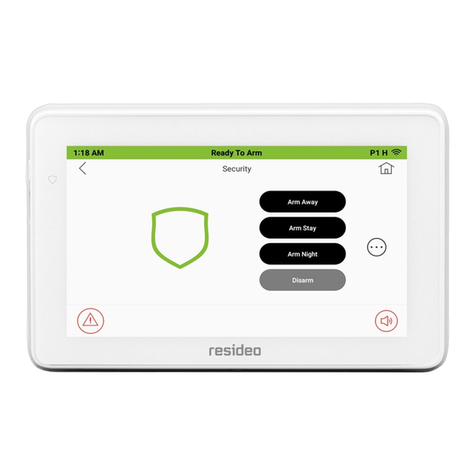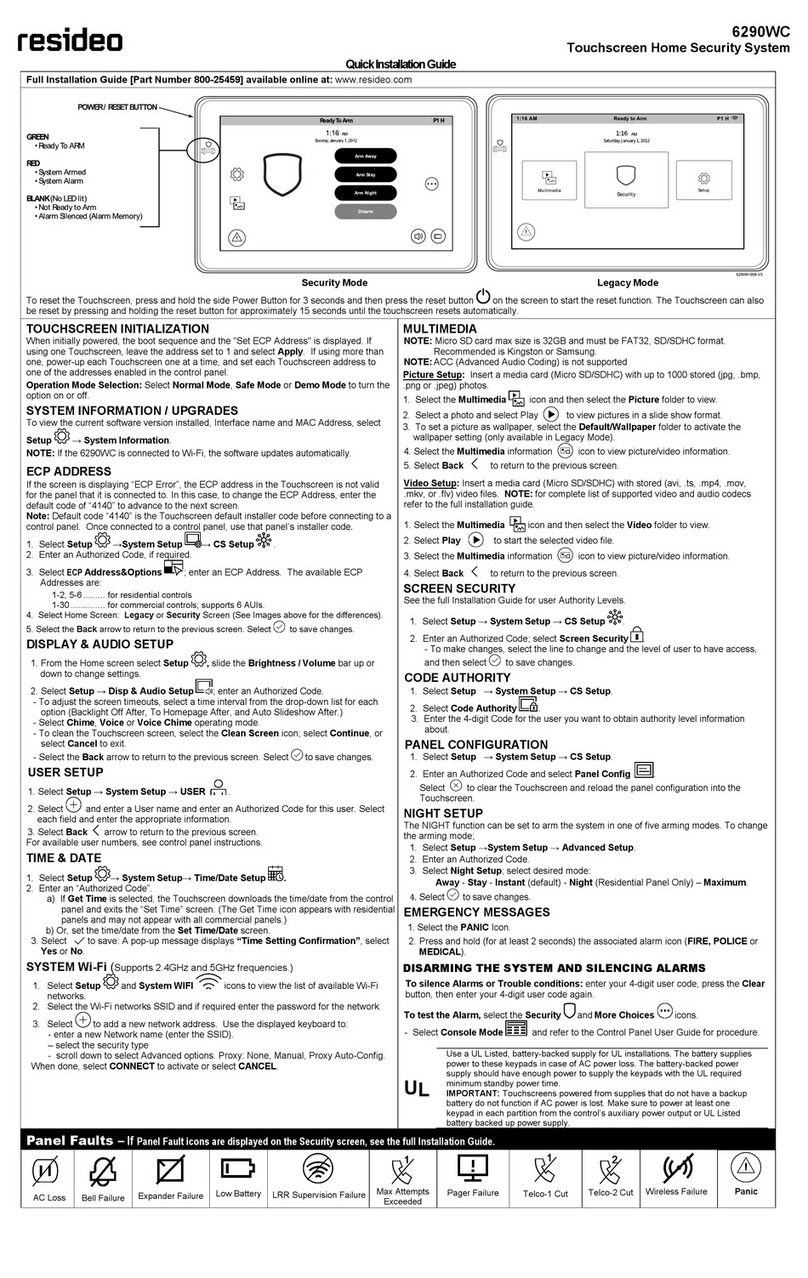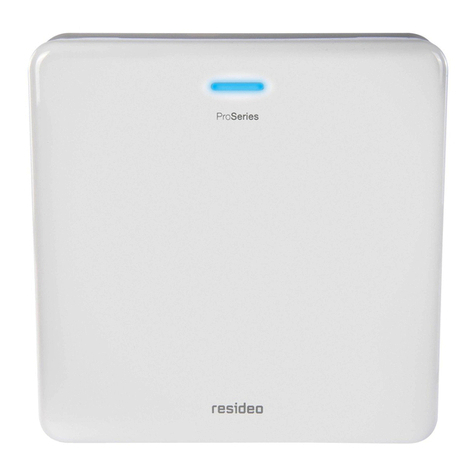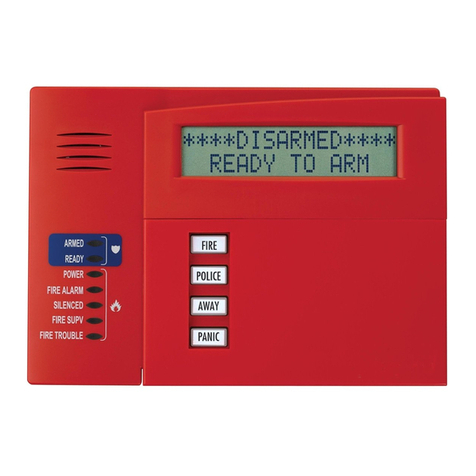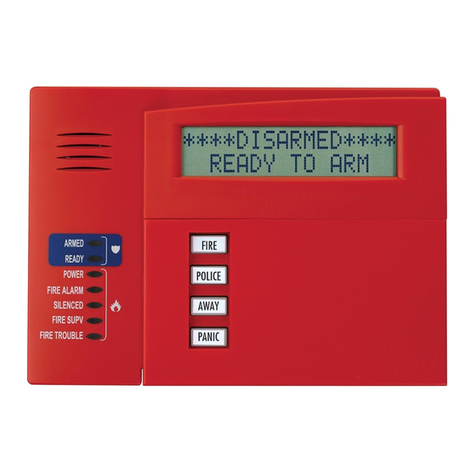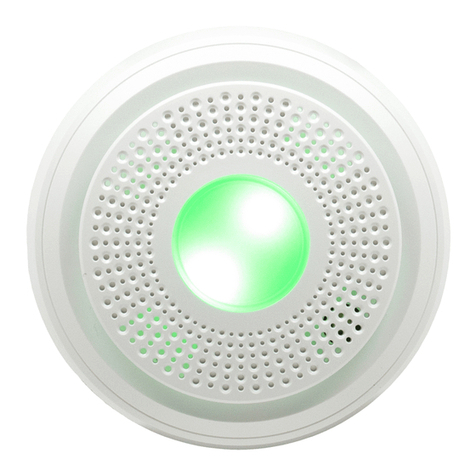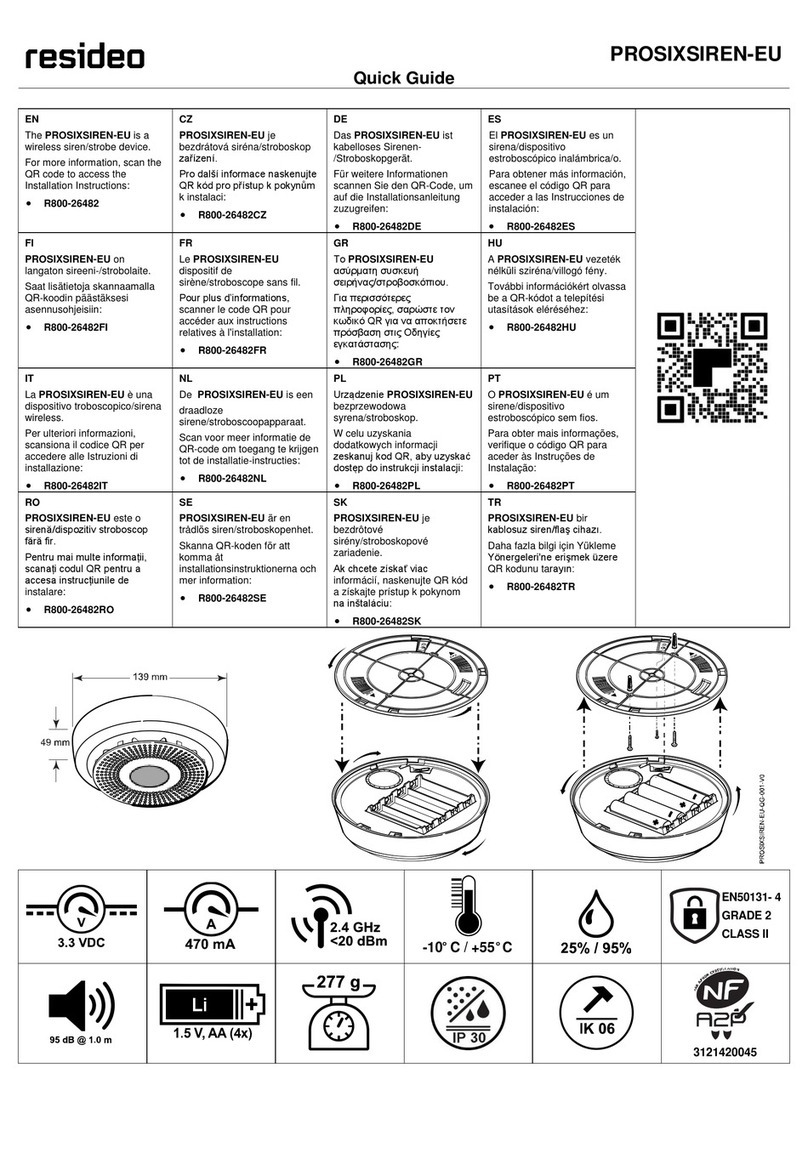7
•Shock detectors detect shocks, such as when an intruder tampers with a door
or a window in an attempt to break in. They provide more advanced security and
can detect an intrusion attempt before the door or the window is ever opened.
•Glass break sensors detect the sound frequency generated by glass when
it breaks. They are the ideal solution to protect large glass areas that are not
protected by blinds or roller shutters.
Volumetric sensors
Volumetric sensors detect motion within the protected area. The movement of an
intruder inside the protected area will trigger the alarm. Volumetric sensors can be
of the following types:
•Infrared sensors detect the heat generated by a person within the field of view of
the detector and trigger an alarm. Because pets also generate heat, pet immune
PIRs are designed to avoid pet generated alarms and represent the most suitable
solution for residential applications.
•Dual technology sensors. These high security sensors allow faster detection
for high risk premises.
•Infrared sensors with image verification. These sensors are designed for
monitored applications. The image sensor included in the detector will store
the picture of the detected object to allow the monitoring station to immediately
validate the alarm and provide a faster response to it. It is also useful to allow the
monitoring station to identify false alarms, generated for example by a blind that
has not been properly closed.
Safety sensors
•Smoke and carbon monoxide sensors. When smoke or carbon monoxide is
detected, the sensor immediately triggers a local alarm to warn the occupants; the
monitoring station is also informed so that they can request assistance from the
fire and rescue services.
Other sensors
•Flood and temperature sensors. Flood sensors can be used to detect
water leaks when placed in a bathroom or near a washing machine for example.
When a flood sensor is triggered the information will be sent to the monitoring
station so that they can to warn the occupants before it has caused severe
damage. The temperature sensors can be used to detect high or low temperature
problems such as frost or a high temperature in a refrigerator or a freezer. When
a temperature sensor is triggered, the information will be sent to the monitoring
station so that they can to inform the occupants before severe damage has
occurred.
